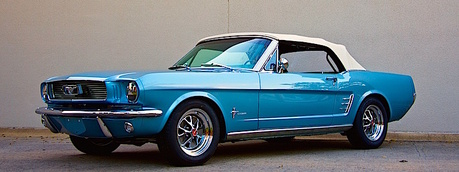
For all intents, it is the real thing – only thoroughly updated.
The Ford-licensed product was developed by Tom Scarpello’s Revology Cars in Orlando. Scarpello, who used to build high performance versions of Ford cars when he worked for the company, loves classic cars but doesn’t like the way they drive. “A lot of people agree with me,” he says. “Consumer expectations have advanced and people are finding that carefully and professionally modified classic cars are an exciting alternative. If the car is built right, the market potential for this type of vehicle is very significant.”
| | |
“The concept behind the company is to bring a scientific approach to the restoration of classic automobiles, utilizing modern components and manufacturing processes to ‘evolve’ them, to improve their performance, reliability, durability, fuel economy, safety, and comfort, while retaining their essential character and style,” explains Scarpello on the Revologoy Web site. Open the ashtray and there’s a USB connection. Turn the window crank, and the power windows go up and down. Flip on the lights and LEDs illuminate front and back. Engines, power-trains, suspensions and brakes are sourced from modern vehicles, Revology says, including a Ford manufactured 302 cu. in V8 that puts 265 hp on the ground through either a 4-speed automatic or 5-speed manual transmission.
So, if you’ve got a spare $119K for the fastback – or $122K for the convertible, get in line. Or, you could re-build your own classic Mustang if that’s your idea of fun, starting with a 50-year-old (or newer) example, which may be anywhere from in barn-find dismal condition to pin-perfect. Even a shabby example of a base ‘60s era Mustang with a six cylinder engine can set you back a significant pile of dollars, while a decent survivor (a relatively non-neglected, unmodified car that can be put back on the road in reasonable time with less-than outrageous expense) can cost in the many tens of thousands. Various examples: http://barnfinds.com/?s=1966+Mustang
Some people buy and restore classic cars for fun and profit then flip them to the next owner (who may not be so handy with a wrench) and go on to the next project. Others collect them, some of whom are hoarders with barns or fields full of cars rusting away (see one of the examples above) waiting for that day that never comes. Others buy (and enjoy) daily drivers. And some purchase only the best examples and show them.
No matter which path you choose, you’re investing in experience. You’re buying memories – not perfectly straight sheet metal, blemish-free paint and numbers that match. Maybe your dad or mom drove a Mustang when they were courting and you want to surprise them on their 50th anniversary with a great-performing car that looks like an authentic new Mustang – because it is, complete with a 100,000 mile warranty.
Experience sells, whether Mustangs or even something seemingly as mundane as groceries. Products with “experience” built in make you feel good and make you want to come back for more, whether that’s next week when grocery shopping time rolls around again or decades from now when you get a hankerin’ for that classic car you enjoyed so much all those years ago. Experience is largely about pleasure. There are companies you look forward to doing business with (even in relatively mundane product categories) and those that leave you cold. There are tools that fit perfectly in the hand and are a pleasure to use and tools that barely get the job done. Airline A wraps its welcome around you, while Airline B treats you like cattle. Brand is a form of experience, a bridge between product and prospect.
Take one look at Revology’s “new” Ford Mustang and you’ll get the idea.
TakeAway: Does your product or service provide a brand “experience” that makes your customers or clients look forward to doing business with you -- all over again?
Content © by Brian E. Faulkner

 RSS Feed
RSS Feed